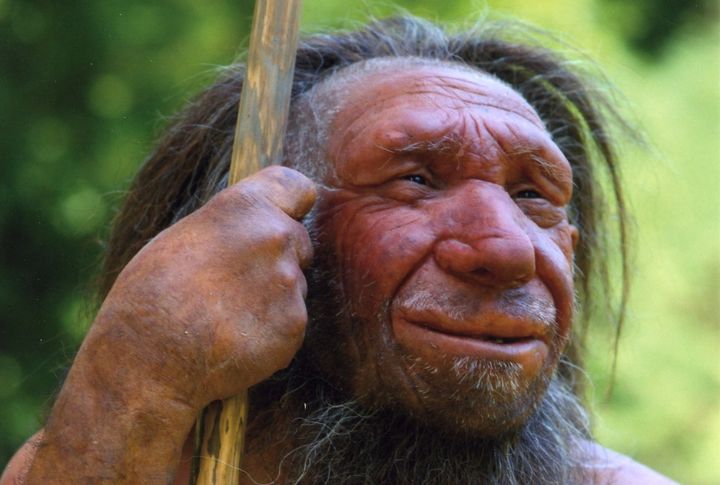
Deep within the layers of human history lies the story of the Denisovans, a mysterious group of ancient humans whose legacy continues to shape modern life. First discovered in Siberia’s Denisova Cave, this species left behind a genetic imprint that still influences us today. Let’s take a look at how this little-known human lineage altered the course of history in unexpected ways.
Who Were the Denisovans?

The Denisovans were an ancient human species that coexisted with Neanderthals and modern humans. They belong to the genus Homo and likely evolved from a shared ancestor with Neanderthals. Despite their significant role in our evolutionary history, Denisovans were only discovered recently.
The Discovery in Siberia

In 2008, a team of archaeologists exploring Denisova Cave in Siberia unearthed a fragment of a finger bone. This tiny piece of fossil initially seemed insignificant, but DNA analysis revealed it belonged to a previously unknown human species. Later, molars and a jawbone from other locations confirmed Denisovans’ existence.
The Denisova Cave

Rich in archaeological artifacts, the site also housed Neanderthals and early Homo sapiens at different times, which makes it a crossroads of ancient human history. The cave’s cool, stable environment preserved fossils remarkably well, allowing scientists to extract DNA from tiny fragments.
Interactions With Modern Humans

Denisovans and Homo sapiens didn’t just coexist—they collaborated and mated. These interactions were important in shaping human history, as they exchanged both genes and ideas. Although direct evidence is sparse, it’s plausible that Homo sapiens learned survival and tool-making methods from Denisovans.
A Genetic Surprise

When scientists compared Denisovan DNA with modern humans and Neanderthals, they found it was significantly different, confirming Denisovans as a distinct species. Denisovan DNA was so well-preserved that researchers reconstructed their genome almost entirely from these tiny remains.
Denisovans’ Geographic Range

Although Denisovans were first discovered in Siberia, genetic traces indicate they roamed far and wide. Evidence suggests they lived across Asia, from the cold Siberian plains to the tropical islands of Southeast Asia. Their range even overlapped with Neanderthals and Homo sapiens in certain regions.
Denisovan DNA Lives On

Unlike Neanderthals, whose DNA is found in all modern humans outside Africa, Denisovan DNA is more localized. A specific group of people in the Philippines, the Aeta people, carry up to 5% Denisovan ancestry. This genetic legacy offers a unique glimpse into their interactions with early Homo sapiens.
High-Altitude Adaptation

The EPAS1 gene inherited from Denisovans helps people living at high altitudes adapt to low oxygen levels. This gene is found in modern Tibetan populations and is why they can thrive in harsh, high-altitude conditions. Without Denisovans, life in the Himalayas might have been far more challenging.
Denisovan-Neanderthal Connection

Denisovans and Neanderthals shared a common ancestor but diverged hundreds of thousands of years ago. Fossil evidence shows they occasionally interbred to create hybrids. One Denisovan fossil had a Neanderthal mother and a Denisovan father, providing direct proof of their interactions.
Limited Fossil Evidence

Unlike Neanderthals, Denisovans left behind only a handful of physical remains. Most of what we know comes from genetic analysis rather than skeletal evidence. This scarcity makes their discovery all the more remarkable and adds to the mystery surrounding them.
What Did Denisovans Look Like?

Scientists used DNA data to predict Denisovan features. Similar to Neanderthals, they likely had broad faces, wide rib cages, and strong builds. However, without complete skeletons, much of their physical appearance remains speculative.
Advanced Tool Use

Artifacts in Denisova Cave, such as sophisticated stone tools and polished jewelry, suggest that Denisovans were skilled toolmakers. They may have passed these techniques to other human species, influencing technological advancement.
Cultural Influence

Some of the artifacts found in Denisova Cave, such as a polished green stone bracelet and advanced tools, reveal Denisovans were more culturally sophisticated than previously thought. The bracelet, estimated to be over 40,000 years old, suggests they had the technical skill to create intricate objects.
Lineage

The Denisovan lineage diverged from their closest relatives, the Neanderthals, about 400,000 to 500,000 years ago. In fact, genetic evidence suggests that Denisovans were not even a single, homogenous group but consisted of at least three distinct lineages, each adapted to different environments.
Denisovans’ Dental Features

Their teeth are much larger than those of Neanderthals and modern humans, and they have unique features that indicate they were adapted to their environment. The enamel thickness and root structure suggest Denisovans may have had diets that required heavy chewing.
A Mysterious Eradication

The exact reasons Denisovans disappeared are still unclear. They might have merged with other human populations or faced competition and environmental changes. A speculation can be that interbreeding with Homo sapiens may have absorbed their unique traits into the human gene pool.
Surviving Climate Change

Denisovans endured climate change by adapting their lifestyles. Fossils from Denisova Cave show that the site remained occupied across multiple glacial and interglacial periods, which suggests that Denisovans adapted to both extreme cold and warm climates.
They Were Not Afraid Of The Sea

Some researchers believe Denisovans may have been the first ancient humans capable of seafaring. Genetic evidence shows Denisovan DNA in populations living on remote islands like Papua New Guinea and Melanesia, insinuating they crossed significant bodies of water.
What Did They Eat?

These people were likely highly adaptable hunters and gatherers who consumed diverse foods depending on their environment. Evidence suggests they consumed a number of animals and plants. Their large molars and jaw structure indicate they could process tough, fibrous foods.
The Enduring Mystery

Despite advances in genetics and archaeology, Denisovans remain one of the most mysterious human species. We know them primarily through their DNA and a handful of fossils, leaving significant gaps in our knowledge of their daily lives, behaviors, and culture.

